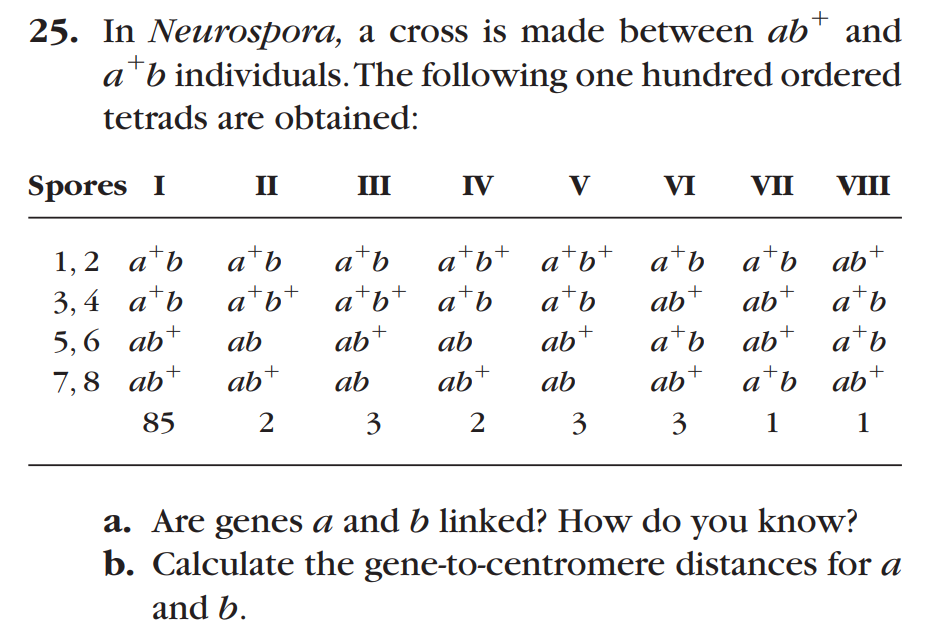Stepwise Solution: Part (a): Are genes a and b linked? How do you know? Understanding the problem: If genes a and b are linked, they will not assort independently, and the number of parental ditypes (PD) will be significantly greater than the number of non-parental ditypes (NPD). Analyzing the data: From the table: Parental ditypes (PD) = Tetrads with only parental combinations (a⁺b and ab⁺) → Type I = 85. Non-parental ditypes (NPD) = Tetrads with only recombinant combinations (a⁺b⁺ and ab) → Type VI = 3. Tetratypes (T) = Tetrads with all four combinations → Types II, III, IV, V, VII, VIII = 2 + 3 + 2 + 3 + 1 + 1 = 12. Conclusion: Since PD ≠ NPD (PD is much greater), this suggests that genes a and b are linked









